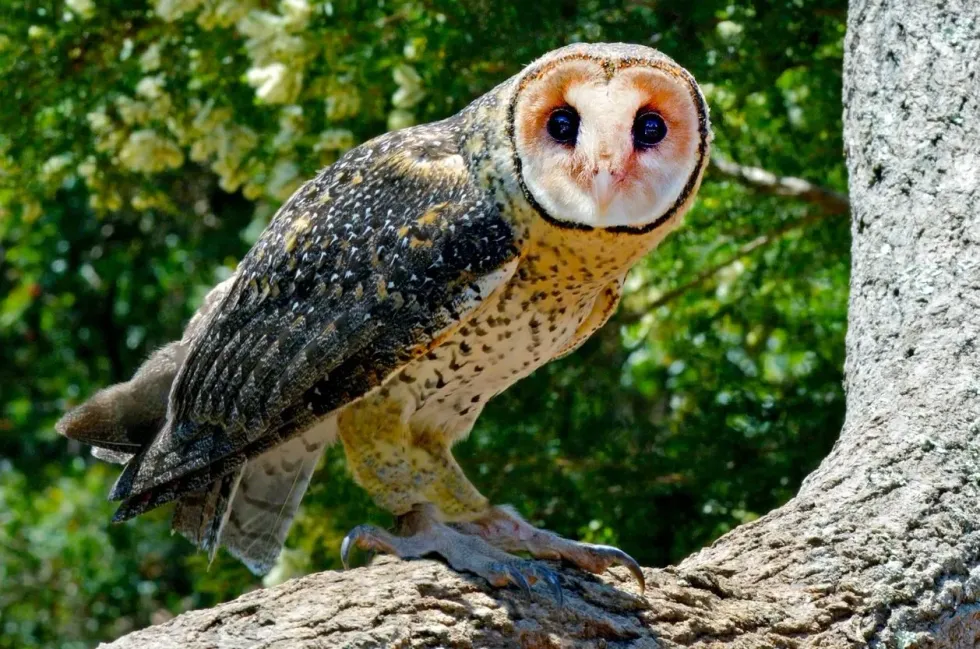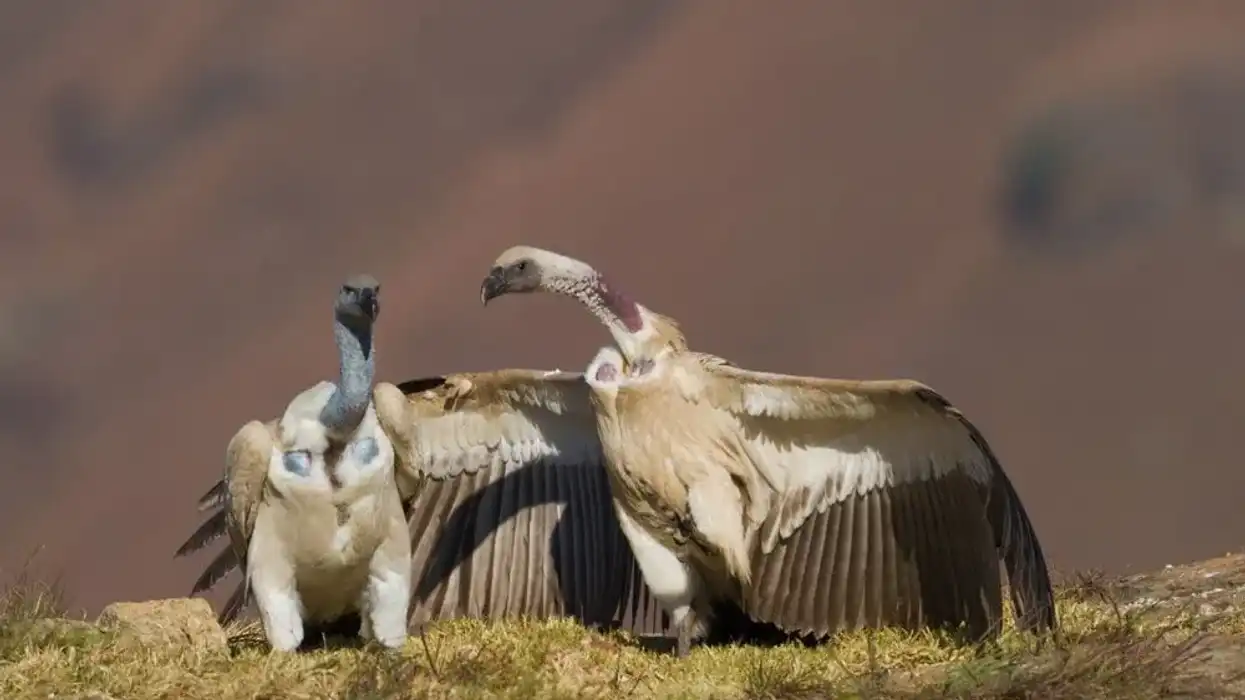The masked owl (Tyto novaehollandiae) is a species of owl that is found in the woodlands and old forests in parts of Australia – mostly southern Australia.
These birds belong to the class of Aves and are unique in appearance as they have a facial disc in the shape of a heart and are dark brown in color. They belong to the subspecies of T.n. kimberli.
These are medium-sized birds and depend on small mammals and birds for food and eat snakes. They are nocturnal creatures and prefer to hunt in the nighttime. They are brown in color with gray spots on the back and black or brown eyes.
The males and females do not differ much from each other; the only difference is that the females are heavier. The masked owls are very territorial birds and prefer to roost and nest in tree hollows.
They lay about two to four eggs which hatch into nestlings after 42 days of incubation. There is no set breeding season for these owls. Therefore, befriending the owls is not an easy task and must not be tried by anyone without knowing these birds.
If you like reading about these facts about Australian masked owls, you could also check out some facts on the stygian owl and flammulated owl.
Australian Masked Owl Interesting Facts
What type of animal is an Australian masked owl?
The masked owl (Tyto novaehollandiae) is a bird species that belongs to the class of Aves and is found majorly in parts of Australia – mostly the Southern regions.
What class of animal does an Australian masked owl belong to?
The masked owl (Tyto novaehollandiae) is the subspecies of masked owls, some from Tasmania. These owls, just like other birds and owls, are classified under the class of Aves. This heart-shaped owl (masked) is known to belong to the Animalia kingdom and is a part of the Tytonidae family.
How many Australian masked owls are there in the world?
There are not many masked owls left because of various reasons like habitat loss and destruction of their natural habitat for development purposes. The distribution is seen majorly in the Tasmania range in Australia.
There are about 1330 breeding individuals or 615 pairs alive globally, which gives them the Least Concern status in the wild. We only have to worry about the Tasmanian masked owl, whose population is declining at an alarming rate.
Where does an Australian masked owl live?
The Australian masked owls are usually found in old woodlands and forests with old trees. These birds are known to have distribution majorly in the southern parts of Australia and are seen searching for food in the forests.
They build their nest in big old tree holes and prefer to stay in darker surroundings as these birds are nocturnal in nature.
What is an Australian masked owl's habitat?
The Australian masked owl (Tyto) is an owl subspecies that prefer a darker and denser forest for living and nesting. These birds live in a hollow in trees mostly and hunt for food in the nighttime.
The nests are made high above the ground on big old trees (mostly hollows) in the forest. These brown birds live on the mainland and are known to hunt in the nighttime.
Who does the Australian masked owl live with?
The Australian masked owl (Tyto) is known to live on trees in the forest and mainland and nest mostly in tree hollows. These subspecies of owls are mostly seen in pairs searching for food and protecting the territory.
How long does an Australian masked owl live?
This brown-colored masked owl (Tyto novaehollandiae) is known to have an estimated lifespan of about 10 years, whereas, the golden masked owl lives for about four years.
How do they reproduce?
The Australian masked owl (Tyto) is seen breeding in favorable conditions with plenty of food supplies. These birds have generally been seen nesting in the tree hollow where the eggs are laid by the female as these birds nest and roost in large trees.
The eggs take about 42 days to hatch, and meanwhile, the males are known to bring food for the females.
What is their conservation status?
The Australian masked owl (Tyto) is known to have a current conservation status of Least Concern animals. The distribution of these birds ranges from southern Australia to other parts of Australia.
However, their population worldwide is not good in numbers, and according to research, if these subspecies are not taken care of properly, they might soon become extinct in the wild. The Tasmanian masked owl is, however, Near Threatened.
Australian Masked Owl Fun Facts
What does an Australian masked owl look like?
As per their description, the masked owls are weird owls because of their facial disc, which is quite rare and makes them look a little unique. The body of these owls is in dark brown with light and dark chestnuts in the chest region.
The dorsal plumage is brown in color, and they have gray spots on their upper back. These subspecies are known to have big feathers, which help them fly silently in the forests.
How cute are they?
The masked owls are not that cute but rather dangerous and weird-looking birds. These birds are mostly in dark brown and have light and dark chestnuts. The male is not very different from the female in the description except for the weight of the female bird. Again, these birds are not cute but rather scary in appearance.
How do they communicate?
The barn owl in its natural habitat marks its territory and protects it from others. These subspecies are known to make various loud and high-pitched calls known as the 'owl call'. The masked owls are also known to make chittering calls and rattles.
How big is an Australian masked owl?
The masked owls are about 13-20 in (33-50 cm) in length and weigh about 14.8-44.5 oz (420-1260 g). They live in hollow trees and hunt for smaller animals like rats and other small birds about four to five times smaller.
How fast can an Australian masked owl fly?
The barn owl species are known to have an amazing flight. Their feathers help them fly fast and without making much sound, which helps them search for prey and attack them. Unfortunately, though, their flying speed has not been measured.
How much does an Australian masked owl weigh?
The barn owl species are medium-sized birds and weigh around 14.8-44.5 oz (420-1260 g) when they are adults. The female masked owls are generally heavier than the male masked owls.
What are the male and female names of the species?
The male and the female of these species do not have any names but are usually referred to as masked owls. They are also known as barn owl species and are referred to as Tyto novaehollandiae when it comes to scientific naming.
What would you call a baby Australian masked owl?
When the eggs hatch, the baby masked owls are referred to as nestlings. They depend on the female (mother) for food in the initial days.
What do they eat?
The diet of this owl species is totally dependent on other small birds and land-dwelling mammals. Their diet includes insects, reptiles, birds, and eggs for food. The masked owl is seen foraging in their territory and is also known to search for food in other locations too. Wild dogs and wild cats hunt these species of owls.
Are they dangerous?
Yes, these species of masked owls are quite aggressive and can even attack humans too if they feel threatened. In addition, they are usually known to feed on other smaller animals, which makes them quite vicious in the wild. Even to protect and guard their territory, the males are usually seen fighting with others in the forest.
Would they make a good pet?
These owl species are very territorial, and they are not the best choice for pets. According to research, these birds are nocturnal animals and feed on land-dwelling animals, and their diet majorly comprises wild animals and insects.
They like to stay in their natural habitat or marked territory rather than being caged. They are not big fans of human contact either.
Did you know...
The masked owls' population was known as mouse owls as these were used to get rid of mice in the 1820s.
Why is the masked owl endangered?
The masked owl (Tyto novaehollandiae castanops) population is of Least Concern. However, the Tasmanian masked owl is Endangered because their population has been decreasing over the years because of various reasons like habitat loss, mainly the old-growth forests that are their preferred habitats.
Do owls eat snakes?
These birds are usually seen feeding on insects, reptiles and even prey on smaller birds. Since they are opportunistic feeders, their diet will include snakes but they will not be the sole focus of their diet.
Here at Kidadl, we have carefully created lots of interesting family-friendly animal facts for everyone to discover! Learn more about some other birds from our elf owl facts and barred owl facts pages.
You can even occupy yourself at home by coloring in one of our free printable Australian masked owl coloring pages.










